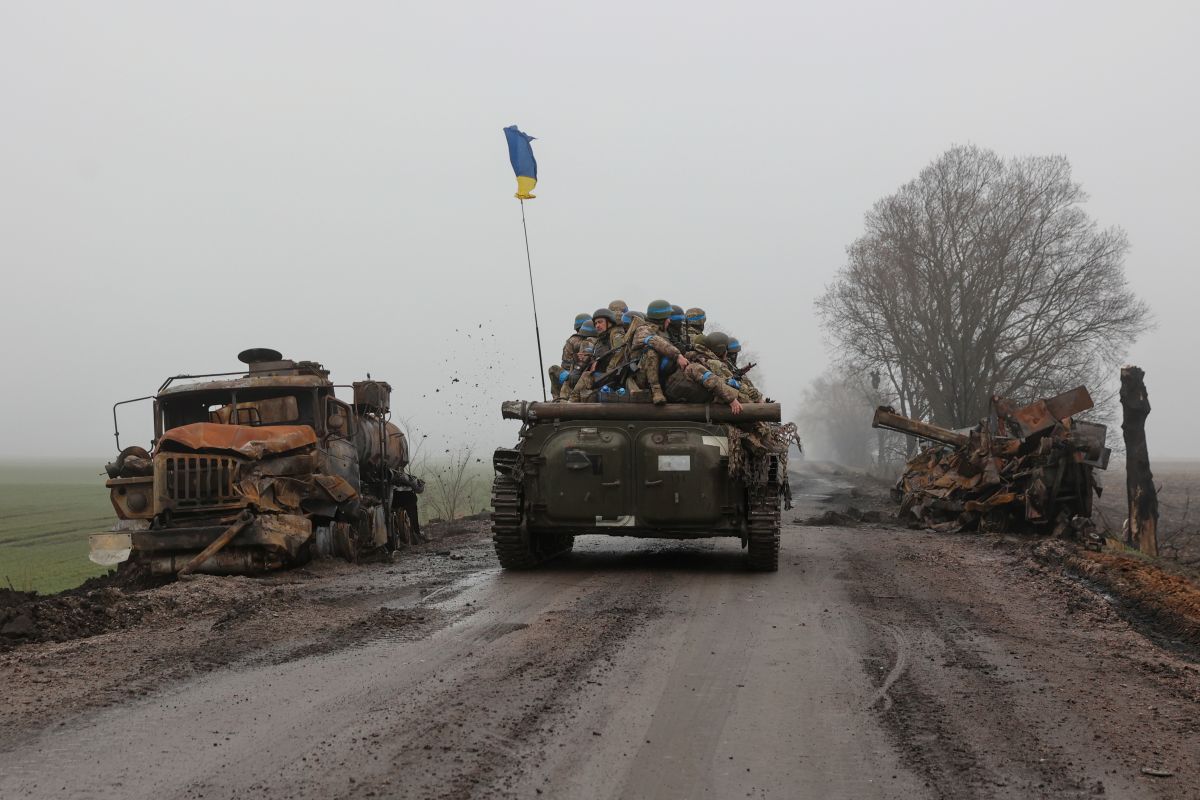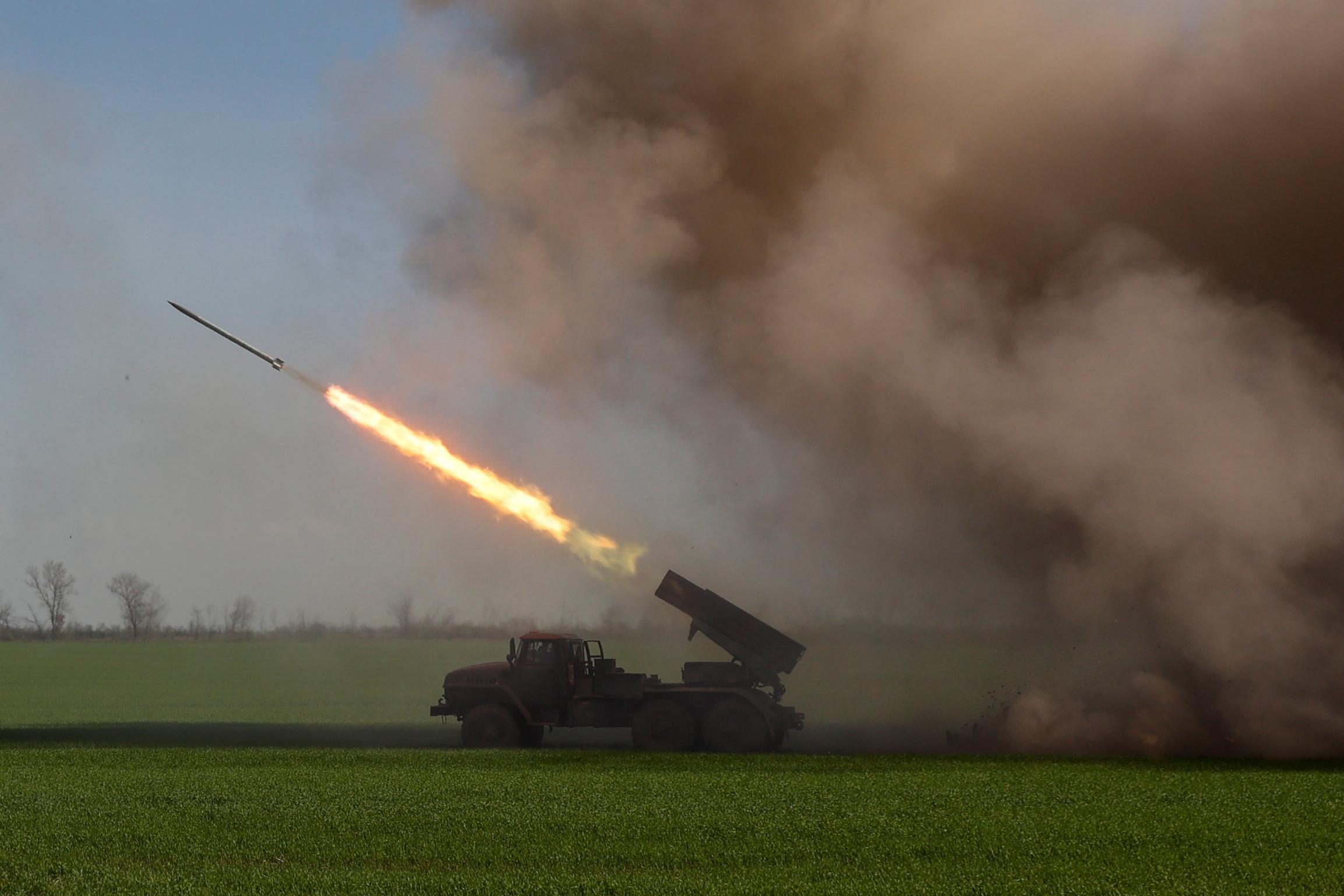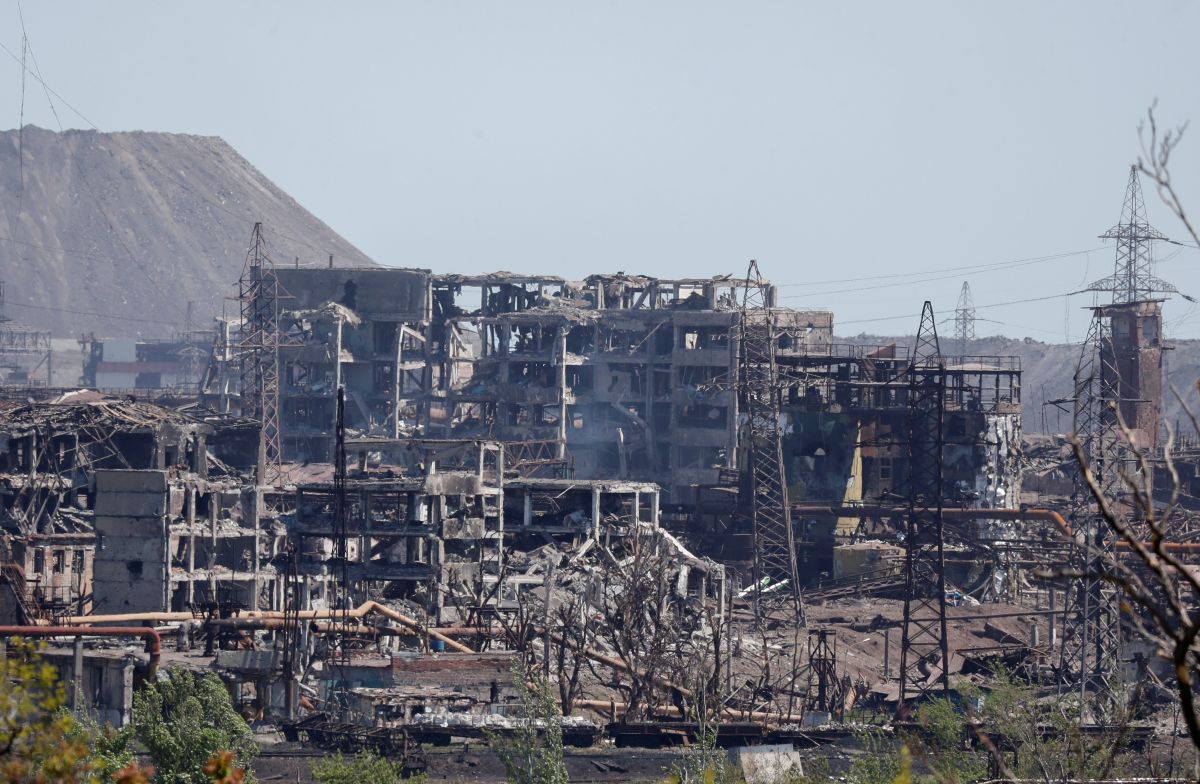The Military Situation in Ukraine as of the End of May
In the last days of May, the fiercest fighting is taking place in Donbas, and the Russians are striving to occupy the entirety of the Luhansk and Donetsk oblasts. Russian troops are increasingly using scorched-earth tactics, which increases the human and material losses in Ukraine. This increases the need for Western support, not only militarily and in the humanitarian dimension, but also financial.
 Jack Hill/News Licensing/Forum
Jack Hill/News Licensing/Forum
What is the situation in the occupied south of Ukraine?
Russia occupies around 20% of Ukraine’s territory (compared to 7% on 24 February). The Russians are trying to consolidate their hold on the occupied territories, mainly in the south and southeast of Ukraine. These are mainly areas in Kherson Oblast, as well as Mariupol and Berdiansk, the most important Ukrainian port cities on the Sea of Azov. Compulsory passportisation is underway, the Russian rouble has been imposed as the currency, and teaching in Russian is being introduced in schools. Some of the inhabitants have been sent to “filtration” camps where their background is checked, including whether they were involved in fighting, and then some have been deported deep inside Russia. Funerals for victims are underway in Mariupol where it is estimated that at least 22,000 inhabitants of the city died as a result of Russia’s actions. It is still not known what the future is for the defenders of the Azovstal steelworks and the families of the soldiers say that they have no news about their fate, while the Ukrainian Ministry of Defence has made information related to negotiations secret. It is not known how many of the Ukrainian soldiers will be exchanged by the Russians for Russian war prisoners or how many of them will be brought before Russian courts and charged with involvement with a terrorist organisation, as Russia classifies the Azov Regiment defending Mariupol.
Russia has now full de facto control of the Azov Sea. It also conducts intensive activities in the Black Sea near the coast of Ukraine, with the aim of an economic and military blockade. However, the Russian navy is more cautious than earlier, fearing Ukrainian defensive actions.
What is the situation in Donbas?
According to the Ukrainian Ministry of Defence, the fighting in Donbas has intensified in recent days, and the Russians have focused on two directions of attack, on Sievierodonetsk and Bakhmut. Intensive fighting has continued in Luhansk Oblast, especially in the vicinity of the towns of Sievierodonetsk, Lysychansk, and Popasna. Russia currently controls around 95% of the territory of the Luhansk Oblast. According to Ukrainian estimates, 25 battalion battle groups (300-500 soldiers each) are fighting there. In turn, in Donetsk Oblast, Russia is leading an attack towards Sloviansk, it has also regrouped its troops after capturing the town of Lyman. Moreover, intensive fighting for the Lysychansk-Bakhmut highway is underway. In their operations in Donbas, Russians are using aviation, multiple rocket launchers, large-calibre artillery, tanks, and mortars. Logistics remains their weakness and they have been forced to turn to older equipment, such as T-62 tanks.
The need to repel dozens of attacks a day has forced the Ukrainian troops to make a significant effort. Due to the tactics used by Russia, which are more adequate to the needs of the battlefield, the Ukrainian side is suffering ever greater losses. That makes it important for Ukraine to quickly get equipment from Western countries, including large-calibre artillery. At the same time, the Russians are increasingly trying to use propaganda showing the first serious signs of exhaustion of Ukrainian defenders, including videos recorded by some units in which the Ukrainian soldiers talk about their increasingly difficult situation.
What is the meaning of the “Battle of Donbas”?
Taking control of Donetsk and Luhansk oblasts will allow the Russian authorities to declare their first clear victory in the war and achieve the political goals of the “special military operation”. It also will enable military reinforcement of the areas occupied since 24 February, allowing, among others, the regrouping of units taking part in the fighting (partial rotation back to Russia, the relocation of some units towards the Mykolaiv and Dnipropetrovsk oblasts, and the transfer of National Guard units to the occupied territories), along with re-provisioning and replacement of destroyed equipment. Full military control of the captured territories will also allow for more and more effective seizure of power in the occupied territories and for putting pressure on the inhabitants to take Russia’s side. Moreover, it cannot be excluded that in the long term, the Russians may want to annex the territories they have conquered into the Federation, even without “referendums” or the appointment of new “people’s republics”.
After the occupation of Donbas, Russia may decide to return to more extensive activities in the south of Ukraine, especially in the Mykolaiv Oblast and the Odesa region. Russia will continue to fire on Ukrainian positions in the interior of the country, aiming at critical infrastructure and key facilities that support fighting units (e.g., railroads, industrial plants, fuel depots, logistics centres, and airports through which Western weapons pass, etc.).
What are the consequences of the current struggle?
In recent weeks, the Russians have used the scorched-earth tactic of completely destroying everything in front of them and then occupy the territory, which has led to serious human losses and severe damage to infrastructure, including roads and the industrial resources of Ukraine. Besides taking ground, the aim is also to lower the morale of the defenders, showing that only a quick cessation in fighting will allow for a significant reduction in losses. The Russian actions are also provoking new waves of migration and internal displacement, and the desolation of regions where military operations were or are ongoing. The policy towards the inhabitants of the occupied territories indicates that Russia will carry out rapid and intensive Russification. The current way they are conducting their military operations also indicates that the Russians have improved the management of the battlefield, including logistics, and have set themselves up for a long-term conflict. Thus, in addition to military aid, the importance of humanitarian and financial aid for Ukraine is growing, as it will need to continue to rebuild basic infrastructure, provide aid to internally displaced people, and maintain the capability to conduct military operations, including training reserves, replacement of equipment, and treatment of the wounded in conditions of a prolonged war.





